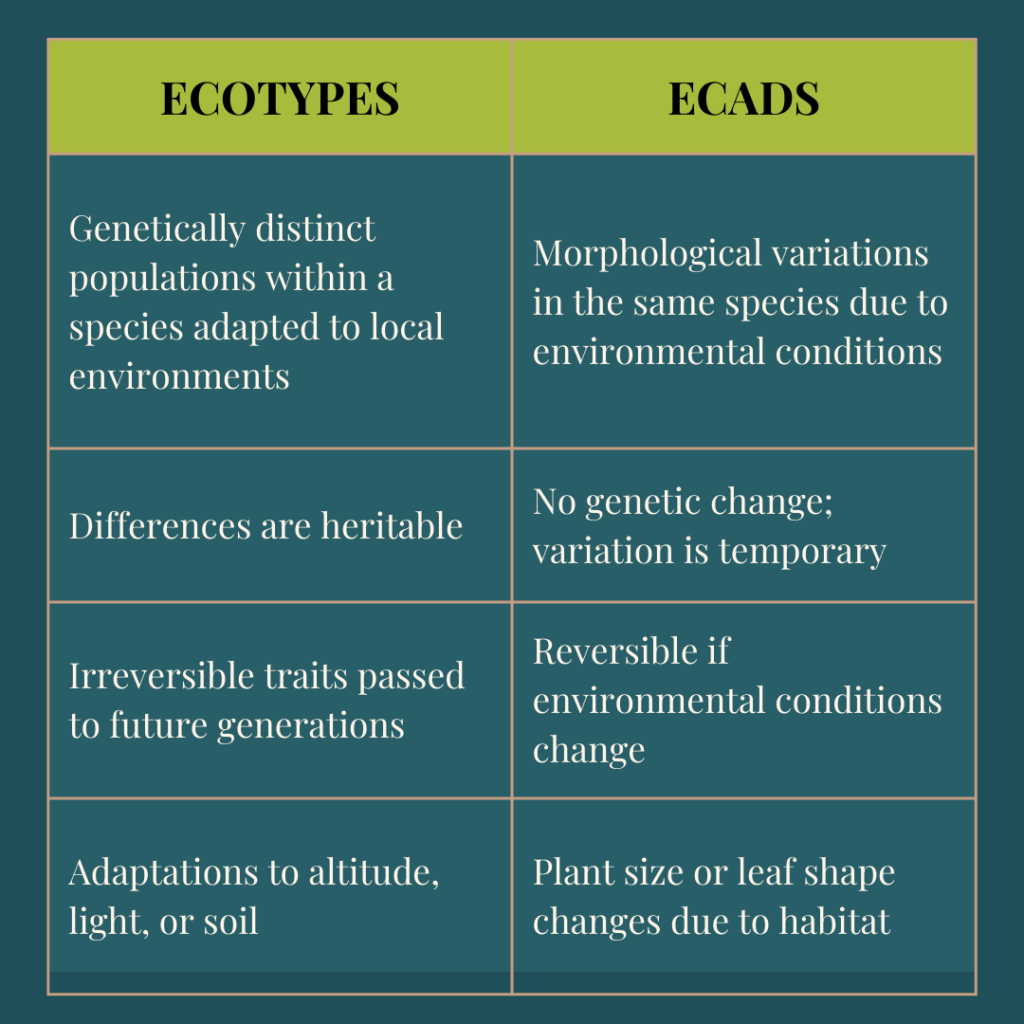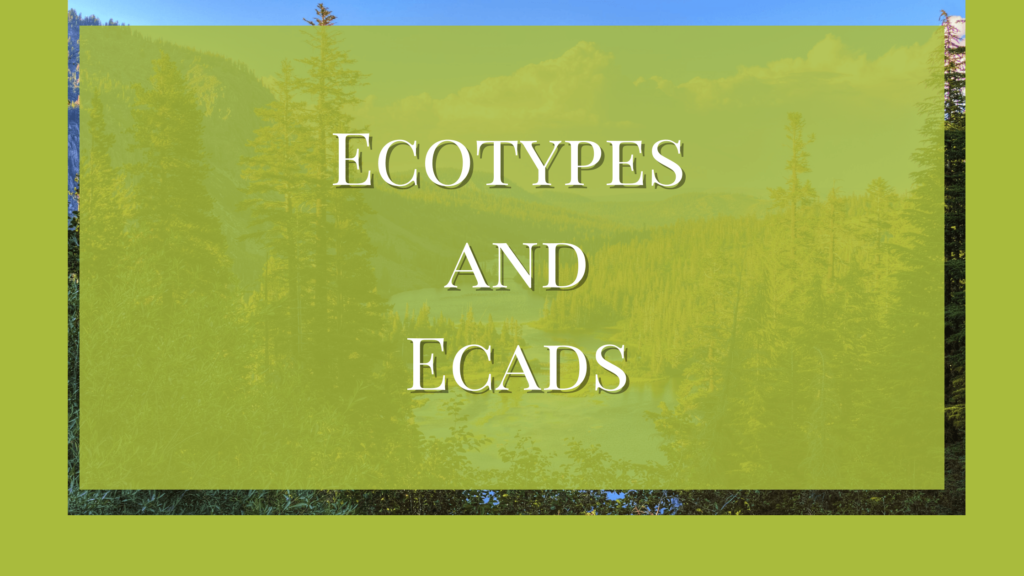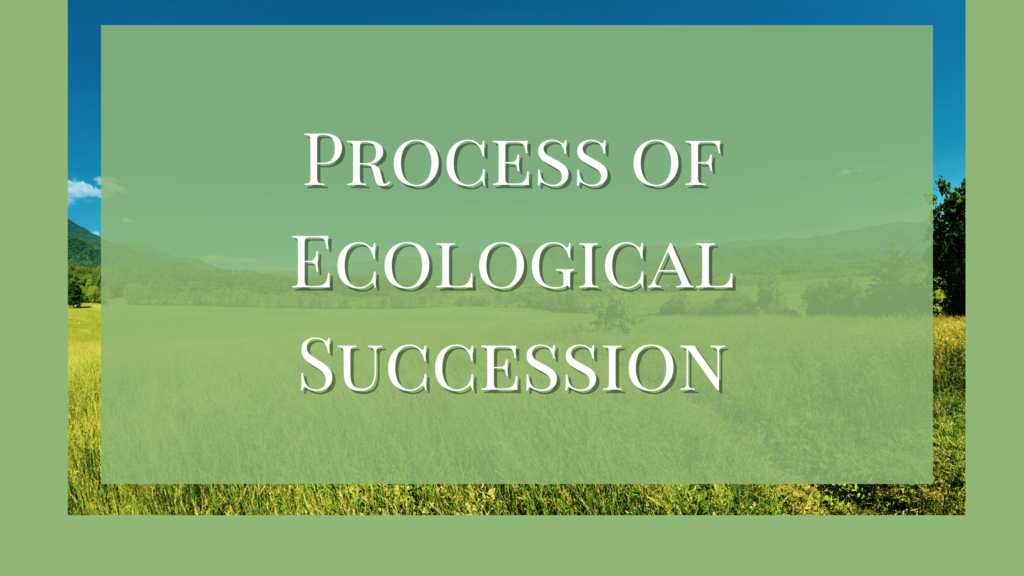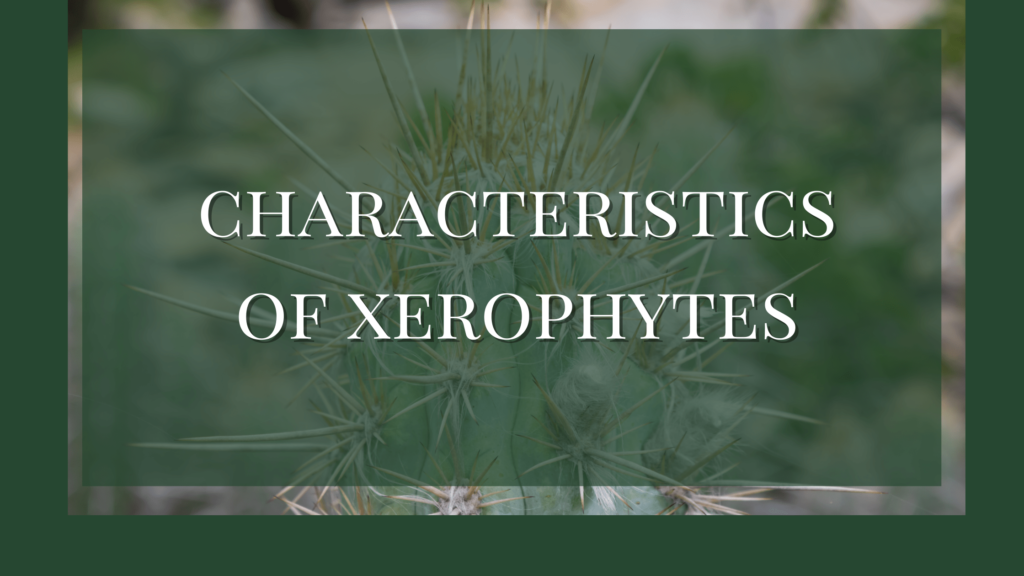Ecotypes and ecads are genetically or physiologically similar or different species that occupy the locality.
Ecotype refers to a subspecies or genetically different population within the same species, that have adapted to the environmental conditions of that locality. They adapted well to the conditions and have also passed on the traits to the next generation. Thus ecotypes may be said to be genetically modified subspecies adapted to the local conditions.
Ecads are also called ecophenes or ephaermones or habitat forms. These are variations in the same species caused by environmental conditions. Unlike the ecotypes, ecads are populations of the same species with the same genetic formulation but differing in morphological features.
Ecotypes and Ecads Explained
Definition of Ecotypes
Ecotypes can be defined as genetic variations within a species that are formed as adaptations to the local environmental conditions. These adaptations are irreversible and permanent.
In 1912, a Swedish Botanist, Doge Turesson began looking at adaptations to local environmental conditions in plants and he coined the term ecotype to describe the genetic variation within a species.
From the theory of evolution, we know that species become adapted to their environment by the process of natural selection. This adaptation goes on within species as local populations adjust to local conditions.
Such locally adapted populations of a species within their own optimum and limits of tolerance adjust themselves to the local conditions such as light, temperature, moisture, etc are called ecotypes. It is seen that some organisms cannot survive if they are transplanted outside their observed habitat range.
Although genetically distinct ecotypes are members of the same species, they are normally interfertile. These genetically modified local populations can reproduce with other ecotypes from the same species and can produce fertile offspring.
Ecotypes have been described in several species of plants and animals.

Types of Ecotypes
The cause of ecotype differentiation may be latitude, altitude, light, soil, biotic interference, physiological changes, etc. Most often, the phenotypic differences between species are very subtle to be termed as subspecies.
According to varying environmental conditions, ecotypes can be of the following types.
- Climatic Ecotypes: Climatic ecotypes develop in response to climatic factors such as light, temperature, water, etc. They are also called climatic clients.
- Edaphic Ecotypes develop as a result of differentiation in nutrients, soil mixture, etc. Dixit, Lucas, and Ramakrishnan described soil mixture ecotypes in Euphorbia.
- Physiological ecotypes develop in response to photoperiod, nutrient uptake, etc. McMillan described ecotypes formed in response to photoperiods in Prosopsis.
- Climo-edaphic ecotypes develop as a result of both climatic factors and edaphic factors. Pandya and Jayan (1970) have established such ecotypes in Senchrus, and Ciliaris.
Ecads or Ecophenes
As mentioned, ecads or ecophenes are phenotypically different variations of the same species in a population. Such variations are temporary and reversible. These changes are not transferred to the offspring.
At the same time, the variations that ecads exhibit could make them be treated as an entirely different species. Yet, such changes can be reversed if these plants are replanted in another location.
Thus, the ability of a single genotype to show different phenotypes under various environments is called phenotypic plasticity. This is a significant ability of the plants to adapt and cope with the various environmental factors.
References
- Shukla, R.S. and Chandel, P.S. (2001) Plant Ecology. S. Chand and Company Ltd., New Delhi.
- Verma, P.S., Agarwal, V.K. (1999). Cell biology genetics molecular biology evolution and ecology. New Delhi: S.Chand Co.(Pvt) Ltd.
- Gene Ecology: Ecological Genetics of Population




